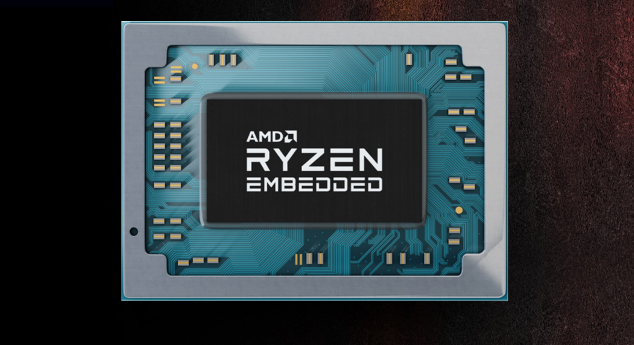AMD Ryzen Embedded R2000 targets thin clients and IoT devices • The Register
Embedded world AMD is releasing a new generation of Ryzen chips for embedded applications promising more CPU cores, improved integrated graphics, and expanded I/O connectivity to drive kits like IoT devices and thin clients.
Importantly, AMD plans to make the R2000 series available for up to 10 years, giving OEM customers a long-life support roadmap. This is important for embedded system components, which can operate in situ for periods longer than the typical three to five year life cycle of laptops and enterprise servers.
The Ryzen Embedded R2000 series is AMD’s second generation of mid-range system-on-chip (SoC) processors that combine CPU cores and Radeon graphics, and target a range of embedded systems such as industrial and robotics hardware, machine vision, IoT and thin client devices. The first, R1000, was released in 2019.
The R2000s were deployed today at the Embedded World 2022 conference in Nuremberg, Germany, with the SoCs featuring up to four “Zen+” processor cores and up to eight Radeon Graphics Computing Units (CUs). This compares to the two Zen cores and three compute units of the previous R1000 family. Zen+ is the same basic design as Zen, but manufactured with a 12nm process to deliver faster clock speeds and improved power consumption.
Because of these improvements, AMD claims that the R2000 series delivers up to 81% better CPU and graphics performance than R1000 series chips.
AMD vice president for its adaptive and embedded computing group, Rajneesh Gaur, said the new chips are likely to find their way into mini PCs as well as embedded applications such as thin clients.
“The Embedded R2000 Series offers system designers more performance, optimized power, and better graphics, all with a seamless upgrade path,” he added.
The chips in production are now 4-core/4-thread and 2-core/4-thread versions, with a few 4-core/8-thread versions slated for availability in October.
With its integrated graphics, the new family of SoCs can drive up to four independent displays with up to 4K resolution, via HDMI 2.0b, DisplayPort 1.4 or Embedded DisplayPort (eDP) 1.3 interfaces.
Extensive I/O capabilities include 6 PCIe Gen3 lanes, a pair of SATA 3.0 ports, and 6 USB ports (a mix of USB 3.2 Gen2 and 2.0). However, one notable absence is the lack of any Ethernet ports. Operating system support includes Windows 10 and 11, as well as Ubuntu Linux LTS.
For security reasons, the R2000 series includes AMD’s built-in Secure Processor, which provides security features such as validating code before it is allowed to run and Memory Guard which protects data in memory by encrypting them – which is transparent to applications.®


Comments are closed.